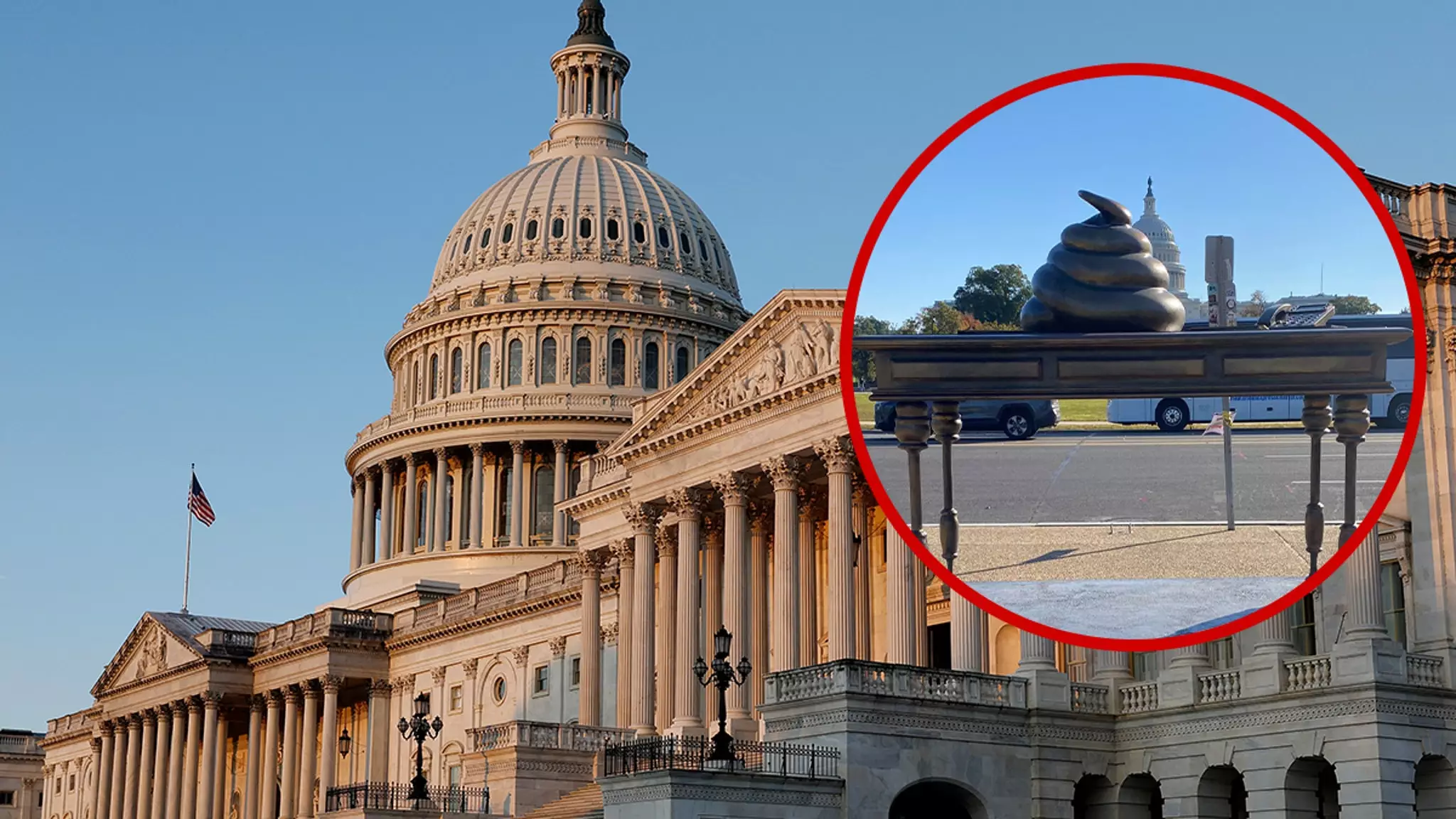In the ever-evolving political landscape of Washington, D.C., a recent installation has piqued the public’s curiosity and ire. This new monument, subtly placed across from the iconic U.S. Capitol, functions as a biting commentary on the events of January 6, 2021. Instead of adhering to traditional commemorative themes, this bronze-colored statue utilizes shock value to deliver a provocative message about the actions of those who stormed the Capitol under the banner of defending their political beliefs.
The statue’s centerpiece—a grotesque representation of feces perched on a desk—carries with it a nameplate belonging to former House Speaker Nancy Pelosi, enhancing the satirical nature of the piece. This design choice clearly indicates the artist’s stance against those who participated in or supported the insurrection. The plaque accompanying the monument bluntly honors what it calls the “brave men and women” of the riot, detailing their acts of vandalism and chaos in a tone dripping with irony. Such a bold artistic statement seems intentionally crafted to jolt viewers into a deeper contemplation of the actions and motivations of that day.
Even more striking is the piece’s commentary on former President Donald Trump, describing him as someone who “celebrates these heroes” and labels them as “unbelievable patriots” and “warriors.” This choice of language not only critiques Trump’s rhetoric but also invites a broader discussion about the term “patriotism” in contemporary America. What constitutes genuine patriotism, and how can acts of violence and insurrection be reconciled with the ideals upon which the nation was founded?
The installation’s creation seems to be a call to arms for citizens to reassess their understanding of patriotism within the context of democratic principles. It does not shy away from highlighting the absurdity of considering those who engaged in actions such as defacing property and disrupting a democratic process as heroic. This twofold approach—both as commemorative and critical—is what sets this work apart from more conventional memorials.
As the 2024 election cycle approaches, this monument stands as a poignant reminder not just of the past but also of the ongoing political turmoil in the United States. It remains to be seen whether this artwork will resonate with a broader audience or fade into obscurity. However, it undeniably serves as a stark warning against complacency; a reminder of the events that have shaped recent politics and the potential for history to repeat itself if citizens fail to engage thoughtfully with the principles of democracy.
As debates about misinformation and accountability continue to swirl, this monument could ultimately become an enduring symbol—a catalyst for discourse about the consequences of political zealotry and the imperative for responsible civic engagement. In a time when the fabric of democracy is under scrutiny, this daring installation demands attention, provoking reflection and, perhaps, a movement toward a more informed electorate.


Leave a Reply